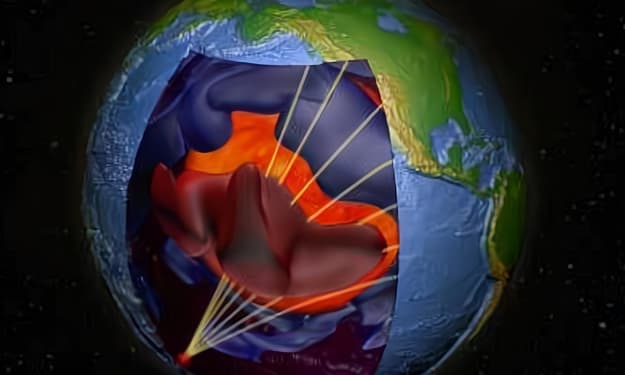
Oct. 3 - There are tens of billions of "super-Earths" in our galaxy alone that are more common and more habitable than the Earth we live on today. Astronomers often discover planets orbiting stars outside our solar system and call them "exoplanets," and in the summer of 2022, a team from NASA's Sunset Exoplanet Survey satellite discovered several particularly interesting exoplanets orbiting in the habitable zones of their parent stars.
One of the planets is 30 percent larger than Earth and has an orbital period of fewer than three days around its star. Another planet is 70% larger than Earth and may have a deep ocean on its surface. These two exoplanets would be super-Earths, which are larger than Earth but smaller than giant planets such as Uranus and Neptune.
Earth remains the only place in the universe where life is currently known to exist, so focusing the search for life on Earth-like planets seems like the logical choice. Research suggests that the most likely target for astronomers to find life on other planets is super-Earths.
Most super-Earths orbit cooler dwarfs with lower masses and much longer lifetimes than the Sun. Scientists have found that super-Earths orbit about 40 percent of the cool dwarfs they have observed. On this basis, astronomers estimate that tens of billions of super-Earths exist in the habitable zone in the Milky Way alone, and that liquid water may be present in them. Since all life on Earth requires water, water is considered a key factor for a habitable planet.
According to current predictions, about one-third of exoplanets are super-Earths, making them the most common type of exoplanet in our galaxy. The nearest exoplanet is only 6 light-years from Earth. As you can see from this, our solar system appears so unusual because it does not have super-Earths with masses between Earth and Neptune.
Another reason why super-Earths are the most desirable targets in the search for life is that they are easier to discover and study than Earth-sized planets. Astronomers use two methods to detect exoplanets. One is the gravitational effect of the planet on its parent star, and the other is the brief dimming of the star's light as the planet passes in front of the parent star. Both of these detection methods are easier for larger planets.

Modern astrologists are exploring the reasons why planets are suitable for life. It turns out that Earth is not the best of all the worlds where life could exist. For most of its 4.5 billion-year history, Earth was uninhabitable for humans and other larger organisms. Simulations show that the long-term habitability of the Earth is not a given, but rather a matter of great chance. One might even say that humans are lucky to be alive.
The researchers list a series of properties that make planets ideal for life. Larger planets are more geologically active, a feature that scientists believe will facilitate biological evolution. Thus, the most habitable planet would be about twice as massive as Earth and 20 to 30 percent larger than Earth. It would also have oceans shallow enough for light to reach the sea floor for life, with an average temperature of 25 degrees Celsius.
In addition, it would have a thicker atmosphere than Earth to act as an "insulation blanket. Finally, such a planet would orbit a star older than the Sun to give life a long time to develop, and it would have a magnetic field strong enough to withstand cosmic radiation. Scientists believe that the combination of these properties would make a planet super-habitable.
By this definition, a super-Earth has many of the properties of a super-habitable planet. To date, astronomers have discovered 24 super-Earth exoplanets that are theoretically more habitable than Earth, if not the best of all possible worlds.
Recently, an exciting discovery has been added to the list of habitable planets. Astronomers have begun to discover exoplanets thrown out of star systems, and there may be billions of such planets roaming the galaxy. If some super-Earth were ejected from its star system, with a dense atmosphere and water, it could sustain life for tens of billions of years, far longer than life on Earth could last before the Sun died.
To detect life on distant exoplanets, astronomers will look for biological signatures, or byproducts of biology, that can be detected in the planets' atmospheres.
NASA's James Webb Space Telescope was designed before astronomers discovered exoplanets, so the telescope is not optimized for exoplanet research. But it was able to do some of that science and plans to target two potentially habitable super-Earths in its first year of operation. Another set of super-Earths with huge oceans discovered in the past few years, as well as planets discovered this summer, are also targets of interest for the James Webb telescope.
But the best chance of finding signs of life in the atmospheres of exoplanets will come from the next generation of giant ground-based telescopes, including the Extremely Large Telescope with a 39-meter mirror diameter, the Thirty Meter Telescope, and the 25.4-meter Giant Magellan Telescope. These telescopes are all under construction and ready to start collecting data by 2030.
Astronomers know that super-Earths have elements that support the existence of life, but being habitable doesn't mean it's inhabited. Until researchers find evidence of life elsewhere, life on Earth may be just a unique accident. Although there are many reasons why habitable planets will not show signs of life, if astronomers look at these super-habitable super-Earths in the next few years and find nothing, humanity may be forced to conclude that "a universe is a lonely place.
About the Creator
Wu Mu
Dreams are not limited, nothing can be achieved






Comments
There are no comments for this story
Be the first to respond and start the conversation.